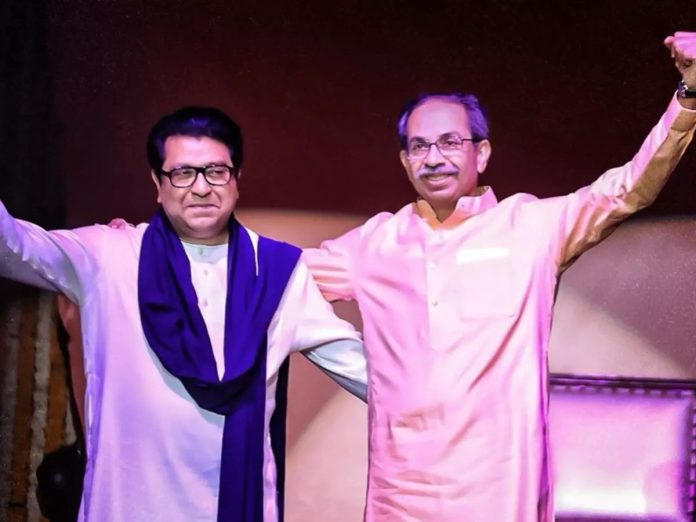A symbolic embrace, a strategic hint – will Maharashtra’s political winds now change direction?
— Mohammed Talha Siddi Bapa
In a moment loaded with symbolism and political weight, Uddhav Thackeray and his estranged cousin Raj Thackeray shared the stage after nearly two decades, raising fresh questions about the future alignment of Maharashtra politics.
The occasion was the “Awaj Marathicha” rally in Mumbai’s Worli on July 5, initially called to oppose the Maharashtra government’s now-retracted three-language policy mandating Hindi in state schools. But the spotlight quickly shifted from language to legacy, as the two Thackerays — once united under Balasaheb’s Shiv Sena — stood side by side, embraced, and declared unity.
“We have removed the distance between us,” Uddhav told the crowd.
“We’ve come together and will stay together,” he added.
Raj, known for his sharp political wit, remarked, “Fadnavis did what even Balasaheb couldn’t — he reunited us.”
The rally turned into a celebration after the state government, facing public pressure and cultural backlash, reversed its Hindi-imposition decision. Yet, the optics of the Thackeray cousins together carried far more significance than the policy win alone.
A Reunion with Real Potential
The last time the cousins appeared together was in 2005, before Raj broke away to form the Maharashtra Navnirman Sena (MNS), accusing the Shiv Sena of sidelining him. The two parties since competed for the same Marathi vote bank, often fracturing regional political influence. Saturday’s reunion is thus seen as more than reconciliation — it may signal the re-centring of Marathi identity in state politics.
Political Consequences: Revival or Rhetoric?
If this unity matures into a political alliance, it could disrupt Maharashtra’s current power equations. A Shiv Sena (UBT)–MNS alignment — either formal or tacit — could consolidate Marathi votes in urban strongholds like Mumbai, Thane, Pune, and Nashik, where MNS still retains influence.
This is especially relevant ahead of the high-stakes Brihanmumbai Municipal Corporation (BMC) elections. The Uddhav-led Sena, once dominant in Mumbai’s civic politics, lost control following the 2022 split led by Eknath Shinde. A joint Thackeray front may revive its fortunes and pose a serious challenge to the BJP–Shinde alliance.
The event also reaffirmed regional identity politics. The demand to protect Marathi language and culture could grow louder, challenging the BJP’s pan-Indian narrative, which often sidelines regional aspirations.
Signals from the System
A senior IAS officer, speaking off record, noted: “This isn’t just about nostalgia. If this unity holds, it may alter governance style — more aggressive on local issues, more culturally rooted.”
Public sentiment echoed the shift. “If they’re uniting for the Marathi cause, they’ll get our vote again,” said Prakash Jadhav, a Dadar taxi driver.
Caution Ahead
Yet, sustaining this unity will require more than shared ancestry. Uddhav and Raj have evolved into very different political personalities — one a coalition-era centrist, the other known for fiery populism. Bridging their styles, ideologies, and ambitions won’t be easy.
Moreover, it remains unclear whether Raj intends to join the Maha Vikas Aghadi (MVA) formally or chart a parallel but cooperative course. Without clarity on electoral strategy or shared governance goals, the reunion risks being reduced to optics.
A Legacy Reawakened
The Thackeray cousins’ public embrace may well mark the rekindling of a legacy that once defined Mumbai and Maharashtra’s political culture. Whether it’s a genuine turning point or a symbolic reunion will become clear only in the months ahead. But for now, the message is loud: Marathi identity is back at the centre of the state’s political conversation — and its torchbearers may just be walking together again.
“The coming days will reveal whether this display of unity reshapes Maharashtra’s political landscape or fades into symbolism — but for now, all eyes are on the shifting winds at Matoshree and Shivtirth.”




